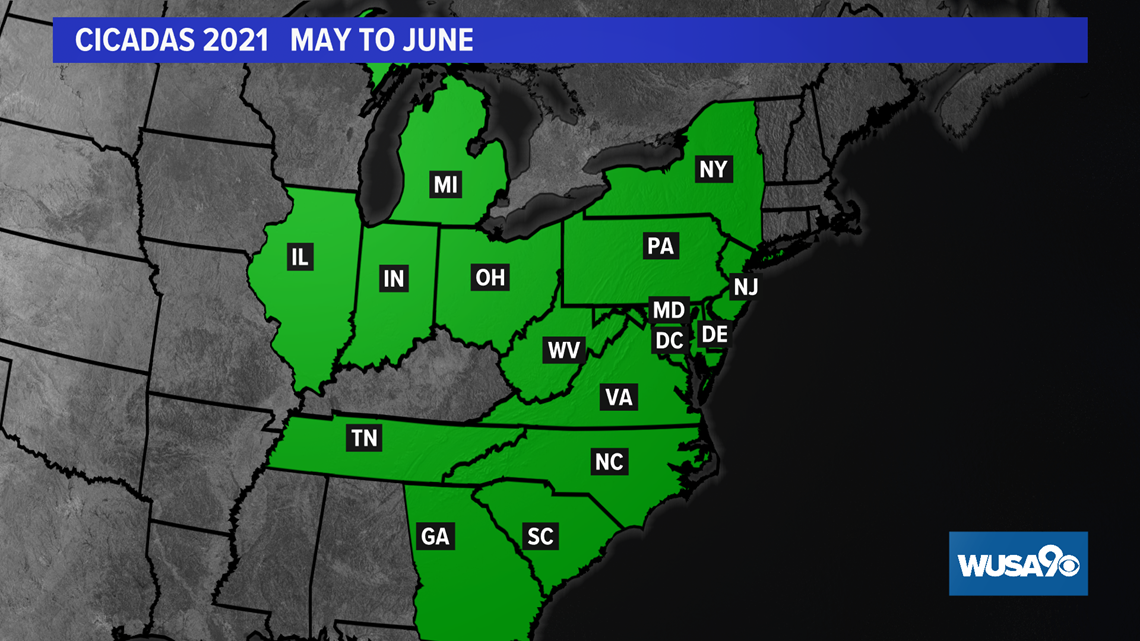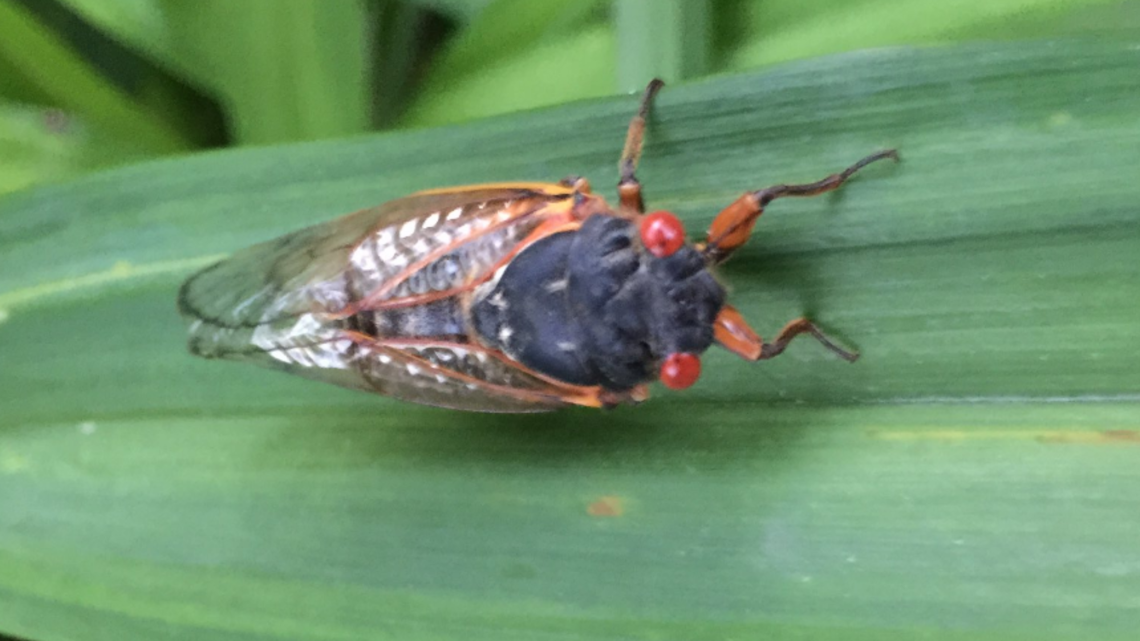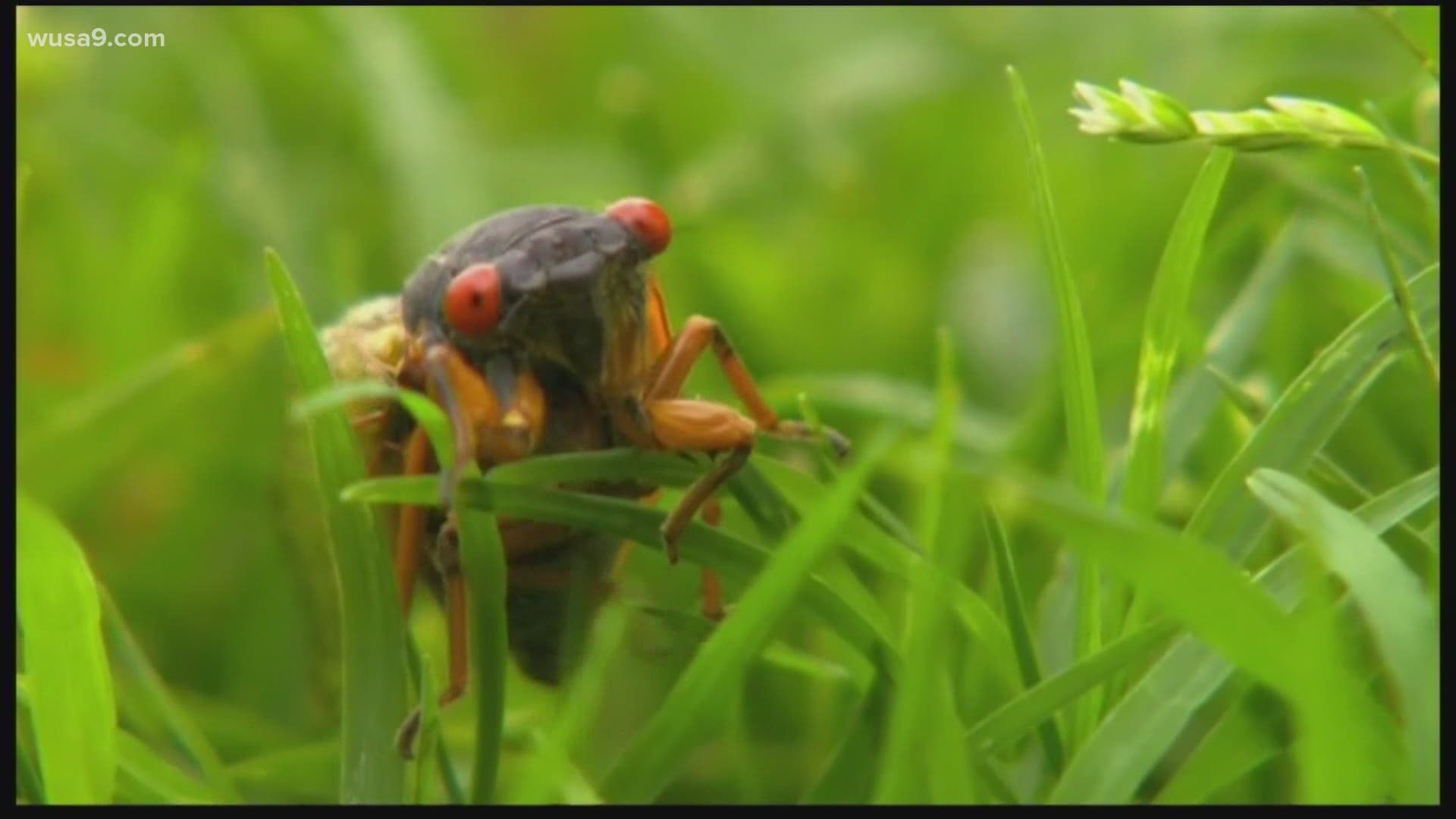WASHINGTON — The DMV will see a phenomenon 17 years in the making when Brood X (Brood 10) cicadas emerge from underground around mid-May. Brood X is one of the biggest cicada broods in North America and will bring billions of cicadas to our region of the U.S.
“They've been underground, just calmly, patiently waiting to come out for this big party,” said Kristin Jayd, a graduate student in the entomology department at the University of Maryland.
“Maryland is at the epicenter, and this is one of the large broods that occurs at one time in 15 different states across the eastern United States. But that's it. That's the only place in the world," Jayd added.
Dr. Paula Shrewsbury, professor of entomology at the University of Maryland, along with a group of graduate students called the Cicada Crew, are keeping a close eye on the emergence on the College Park Campus.
There are 15 broods, or groupings, of periodical cicadas in the eastern U.S.
“Twelve of those are 17-year cicadas, and three are 13-year cicadas, but they’re designated by Roman numerals,” according to Dr. Shrewsbury.
This year’s brood is called Brood X. One of the biggest broods in North America.




“All the different broods have the same three species. [They] are a group of cicadas that emerge at the same time, in the same geographical location.”
Dr. Shrewsbury tells us that different broods rarely overlap, and the three different species do not interbreed.
The Nymphs Are Here. Or Rather, They Never Left.
We’re used to seeing cicadas in their adult form. But it’s a long journey for the bugs before they reach adulthood.
Before reaching their final stage of life, which is the red-eyed insect that swarms our skies in late May, cicadas spend most of their time as nymphs. The nymphs are underground, unseen and unheard from before emergence.
Contrary to some popular beliefs, they haven’t been in hibernation.
The nymphs have been moving and eating sap for nearly seventeen years.
“They eat tree sap and the [plant] tissue that they eat is called xylem. And it doesn't have a lot of nutrients in it,” Jayd explains.
“[They] just don't move around a lot, but they are alive and eating, and [they] can move around to find just the right spot on the tree root. Even before the big emergence, they get closer and closer to the surface, usually they're a couple of feet down 18 to 24 inches underground. And even as early as a year or so ahead of time, they're going to start slowly making their way to the surface.”
Finally, after all that eating, they get ready to emerge.
Signs of that emergence can come months before the main event. The nymphs make holes in the ground as they close in on the surface.
The mass emergence will begin when the ground reaches a certain temperature, Dr. Shrewsbury said.
“The majority of all the cicadas, of those trillions of cicadas emerge, usually starting around mid-May, when the soil temperatures reach 64 degrees. That's the cue. They all come out in this mass synchronous emergence.”
The Cicadas Emerge, Now What?
The literal song and dance start with the emergence of the nymphs. The primary mission is to find a mate.
Nymphs will climb tall objects before shedding their skins to become full-blown adult cicadas.
“They're going to crawl up any tall structure, preferably trees …. and they're going to crawl up, and then mold or shed their skins and become adults,” said Dr. Shrewsbury.


“Cicadas can make a lot of noise,” Dr. Shrewsbury tells us. “The male cicadas are making the noise because that's how they attract the females. So, males, they go up into the trees, by the hundreds and hundreds and hundreds, and make this very loud chorus. We call it singing. And when they're all together in a tree, it's a chorus. The louder they are, the more females they will attract to the tree. When the females get close, the song changes between the male and the female. And he has a special song for that special female. [I]f she likes him, and she decides she wants him to be the father of her babies, she flicks her wings, and then he knows that it's OK, and then they mate.”
The singing of the cicadas can go from midmorning to dusk each day for several weeks in May and early June.
After choosing a mate, the female lays her eggs.
“Over her lifetime, she can lay about 400 to 500 eggs,” said Madeline Potter, a graduate student at UMD and a member of the Cicada Crew.
Adult cicadas only live for four to six weeks. After this, they die off in mass numbers.
Meanwhile, the eggs hatch in six to eight weeks and tiny rice grain-sized nymphs fall from the trees and crawl into the ground. From there, they dig in and start the 17-year cycle over again.
'This Is The Biggest Buffet For Our Local Wildlife.'
One of the huge benefits of massive broods of cicadas is that millions of animals get to eat.
"Every predator that wants to eat a cicada can eat until their belly is full, and they can eat no more, including humans, "said Dr. Shrewsbury. "And there will still be enough cicadas left to keep the populations going on for the future”
Additionally, once the cicadas die off, they provide natural compost for local soils.
While there are massive benefits for our environment, many people say they would rather not see or hear the cicada brood, especially those who with strong fears of insects and bugs.
“They can't hurt you. They don't bite, they don't sting,” Dr. Shrewsbury explains. “They fly. They're kind of clumsy fliers, so they might accidentally bump into you or land on you. But it's not to hurt you. They’re harmless.”
Still, what if you wanted to get away from this once-in-a-lifetime event?
Dr. Shrewsbury tells us you’ll have to leave town to get away.
“If you live in Maryland or this DMV area, and you don't like cicadas, you could go to the eastern shore, and just hang out there for about three or four weeks and wait until the cicadas are gone. The cicadas do not emerge on the eastern shore.
For the rest of us, it’s worth sitting back and enjoying the song of the cicadas. Once Brood X goes silent in June we’ll have to wait another 17-year to hear that sweet, or sour, depending on your perspective, song again.



